Fly Fishing in Alaska: The Complete Guide
Updated on
Aug 23, 2022 |
8
minute read
Written by Vuk
Reading Time:
8
minutes
If you’re the type of angler who likes to stray off the beaten path, there’s a good chance fly fishing in Alaska is just the thing for you. With thousands of rivers and a couple of million lakes, you could easily spend the rest of your life fishing here and only see the smallest part of what the “Last Frontier” has to offer.
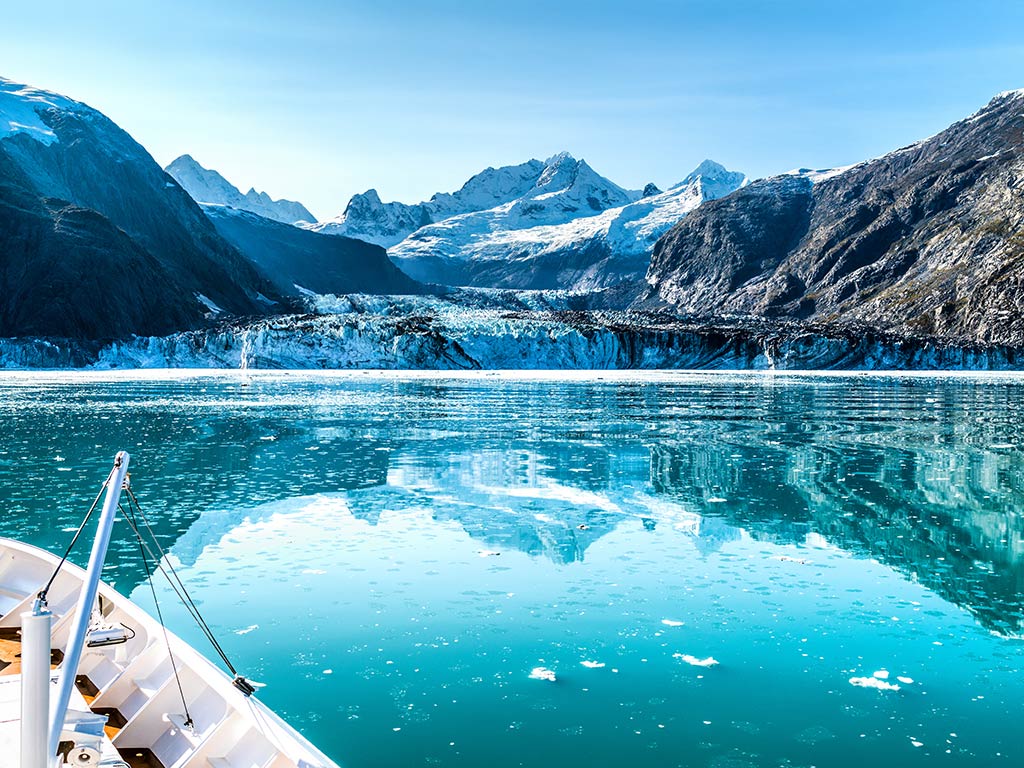
This guide will take you through everything you should know before planning your fly fishing trip to America’s coldest state. We’ll show you what you can catch, where you can do it, and when. At the end of it, we’re sure you’ll be itching to cast some flies as soon as possible. Let’s jump in.
Mục Lục
Top Fly Fishing Targets in Alaska
A real treat for freshwater anglers, Alaska is home to some of the best Salmon and Trout fishing money can buy! It’s also the only place in the States where you can find subpolar species like Arctic Char and Grayling. To make this impressive variety more manageable, here are the most popular species you can catch on the fly in Alaska:
Salmon
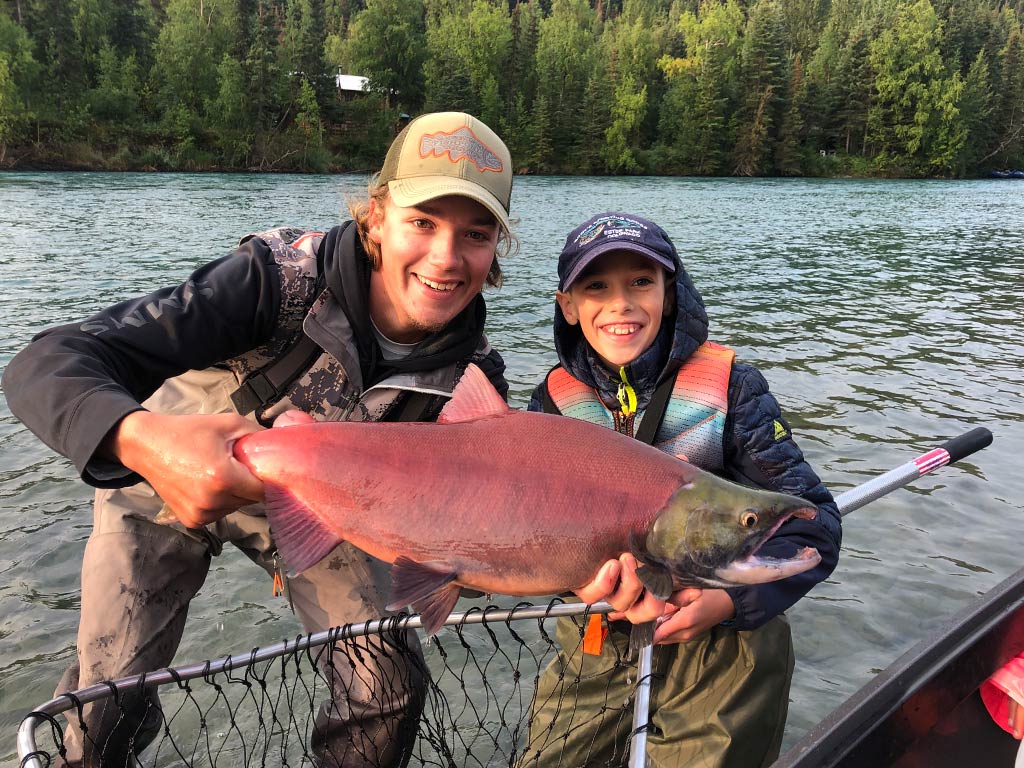
Easily the star of Alaska’s fly fishing scene, the different types of Salmon here will make your day on the water something to remember. Chinook (King) Salmon is Alaska’s state fish and certainly the strongest fighter of the bunch. On the other hand, Sockeye are very popular with anglers because of their delicious flesh. Finally, let’s not forget the likes of Coho, Chum, and Pink Salmon, all of whom make this a fishery you don’t want to miss.
With so many different Salmon species out there, you’ll need to pick your gear accordingly. King Salmon weigh anywhere from 15–60 pounds, so you’ll need at least a 10 wt rod with heavy shooting head fly lines and weighted flies that are large enough for efficient presentation. With Sockeye and Chum Salmon, you can knock that down to 7–8 wt rods paired with floating or sink tip lines. Pink and chartreuse flies are good starter options, and the Dolly Llama pattern is a particular favorite with anglers going after Salmon.
Trout

Another staple of fly fishing in Alaska, Trout are always a good option if you’re looking for a traditional freshwater experience. Alaska is bustling with Rainbow Trout, especially in the western parts of the state where 30″ Rainbows are common. The only problem is that some of those fisheries out west are difficult (and expensive) to reach. That being said, taking a floatplane ride before a day of fishing is something every angler should put on their bucket list.
If you plan on hitting one of the many lakes around here, you’ll have your fair share of Lake Trout to boot. They’re usually found in large, deep, cold lakes and you can fish for them from April all the way through October. Keep in mind that the best time to cast some flies is right after the ice thaws – when the water is cold enough but not frozen. Local anglers usually use minnow and leech patterns in different colors when trout fishing.
Arctic Char

Moving on, let’s talk a bit about a species you can’t find anywhere else in the US. Arctic Char are actually members of the Salmon family, but thanks to their trademark spots you can easily tell them apart from other salmonids. If you’re looking for a unique fly fishing experience in Alaska, the Arctic Char will prove well worth the trip.
The best time to go looking for them is between late May and early July. That’s when they congregate and eagerly go after the local Salmon. They’re aggressive and don’t mind shallow waters at all, which makes wading a popular way to approach them when the season hits. As far as the choice of flies goes, leech and streamer flies are some of the more popular picks among local anglers.
Arctic Grayling
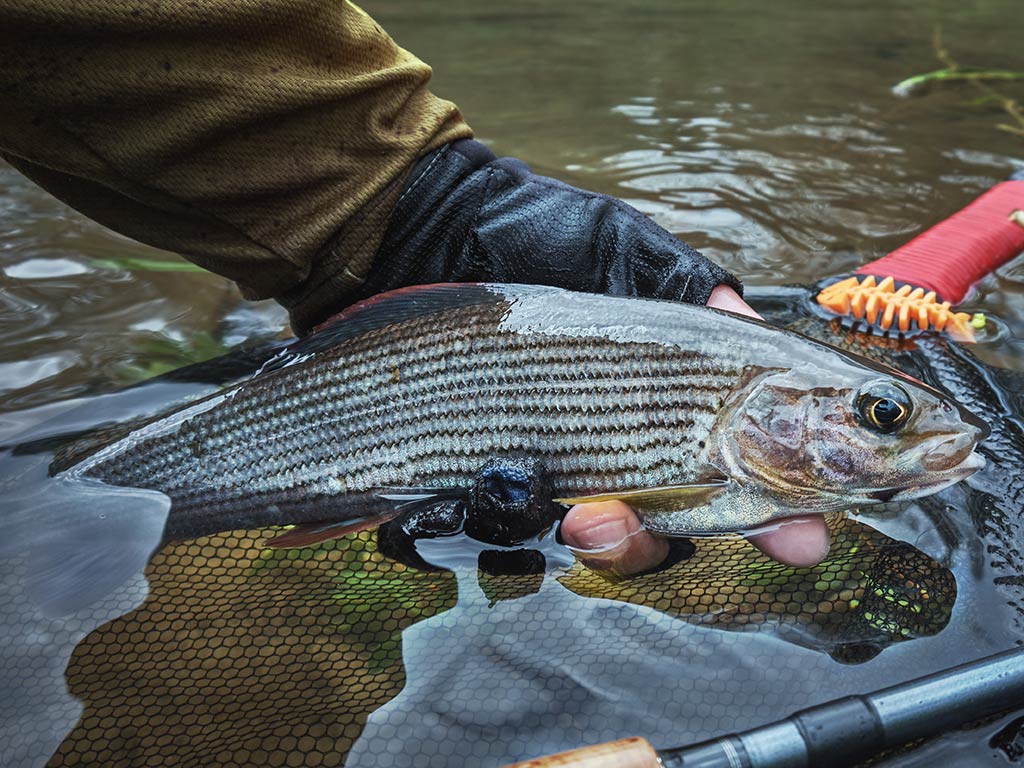
When it comes to sheer quantity, Arctic Grayling rule the Alaskan freshwater. Their popularity is partly due to the fact you simply find them everywhere you go. While not the biggest fish out there, they’re probably the most intelligent. By no means should you underestimate the humble Grayling. They’ll surprise you. And the fact they mainly feed on insects makes them a great fly fishing target to boot.
A good approach when targeting Grayling is to start with the faster sections of the river you’re fishing in. Graylings’ dorsal fins allow them to make use of the current when running from predators or catching their prey. Because of their size, you can easily go after them with a 6 wt rod. As for flies, the X Caddis, Bead Head Stonefly, and Royal Humpy are all good choices to start out with.
And More
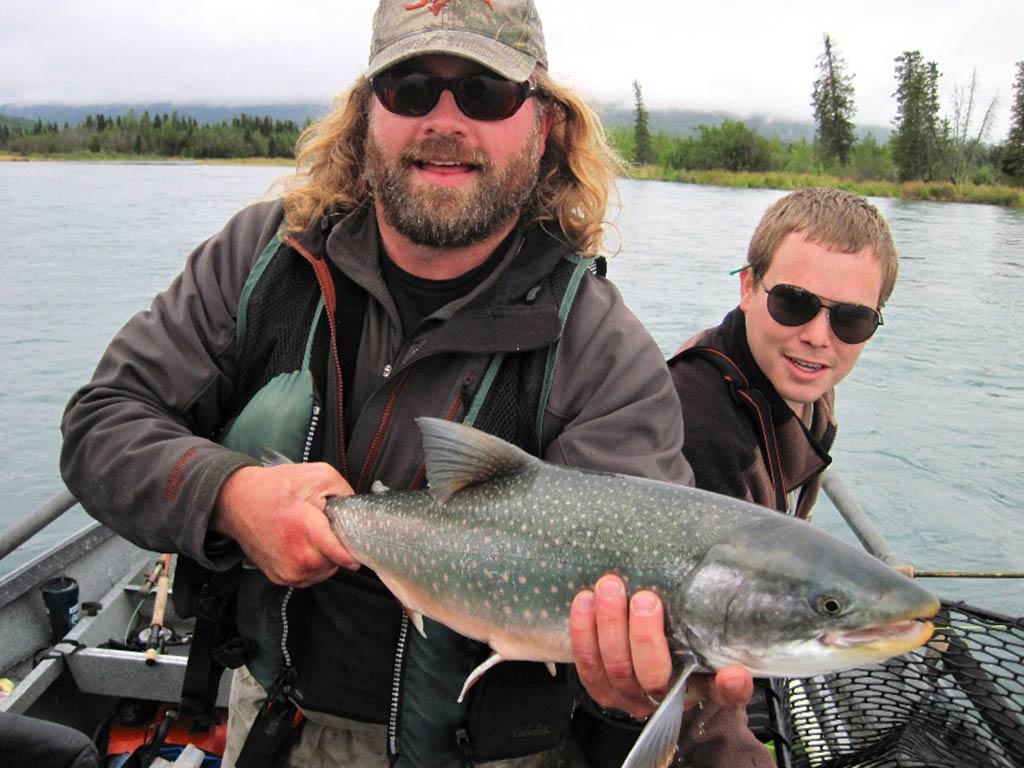
All the species we mentioned above can keep you entertained for a long, long time, but they’re far from everything these amazing rivers and lakes can offer. Take the Sheefish and Northern Pike for example. The former are known as “Tarpon of the North”, while the latter always provide a thrilling fight due to their aggressive nature and stubborn ferocity.
Last, but certainly not least, we have the Dolly Varden, often confused with their close cousins – Arctic Char. While Arctic Char stick to lakes, Dolly Varden spawn and live in streams and rivers, rarely showing up in lakes. They share an uncanny resemblance, but you can simply tell them apart by comparing the Char’s noticeably-forked tail with the Dolly Varden’s that’s only slightly forked.
Where to Go Fly Fishing in Alaska
Now you know what your options are in terms of fish species. But you should also know where to find them. After all, Alaska’s a pretty big place. Picking the cream of the crop when looking at thousands of different rivers wasn’t easy, but we’re sure you’ll like what’s in store. So without further ado, let’s dig into some of the best places to go fly fishing in Alaska.
Kenai River
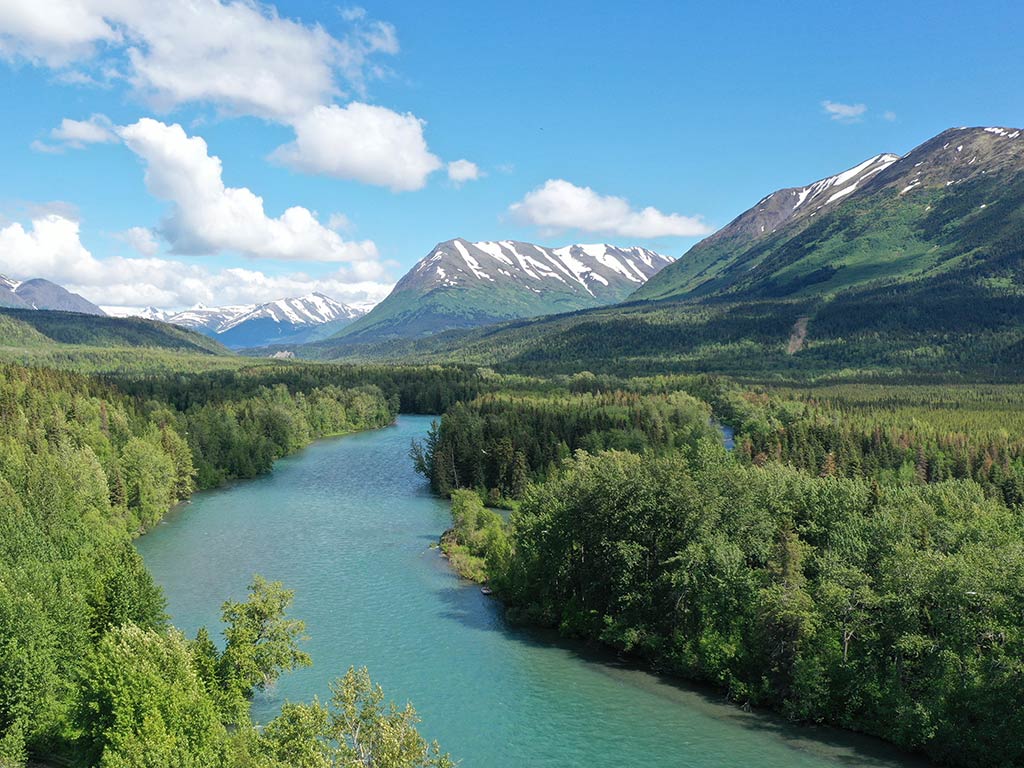
Even if you’ve never been fly fishing in Alaska, you might have heard good things about the Kenai River. Located in the south of the state, it’s the first fishing destination for many anglers flying in. We can hardly blame them, since the Kenai River is a productive fishery full of Rainbow Trout, Coho, and Sockeye Salmon, as well as Dolly Varden. Fun fact, it’s also the record-holder for the largest King Salmon ever caught! Back in 1949, Les Anderson caught an astonishing 126 lb monster, still unbeaten to this day.
While you can technically come here to fish any time of the year, we’d recommend an August or September trip. That’s when the fishing really comes alive and you’ll see anglers land trophy-class 30″ Rainbows. With enough skill and a dash of good luck, you might be among them. Once you’ve boated one of those, you’ll truly understand why the Kenai is a world-famous destination.
Alagnak River

Further away to the southwest, you’ll find our next stop – the Alagnak River. Another river renowned for the size of its fish, this one’s a real treat for all Salmon lovers out there. Boasting five different species of Pacific Salmon, as well as Rainbow Trout and Arctic Grayling, it’s a great option for both beginner fly anglers and seasoned casters alike.
The Salmon run starts in late June with Sockeye and Kings, closely followed by Chum, Coho, and Pink Salmon. The going is good all the way until mid-to-late September, giving you plenty of time to plan a summer vacation to remember for years!
Quartz Creek
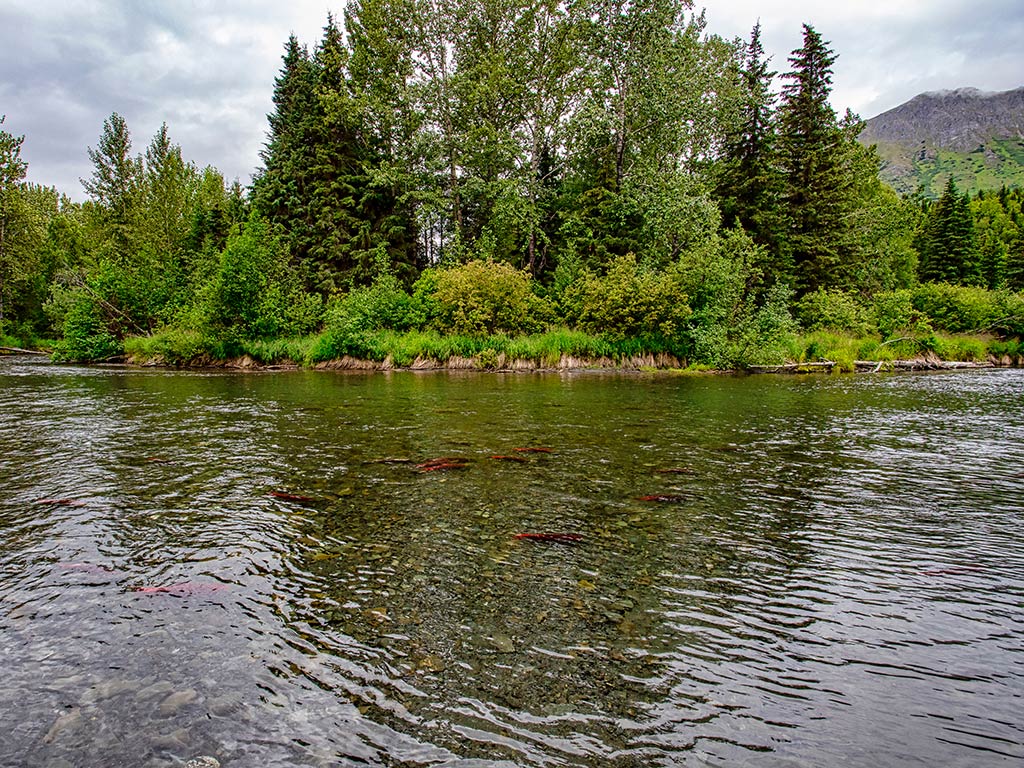
Quartz Creek is known for being a top Dolly Varden fishery, along with being easily navigable given its smaller size. It’s a good fit for a more off-the-beaten-path experience that highlights Alaska’s stunning wildlife and unique fishing opportunities. The reason why it’s not a more mainstream location is simply because Salmon fishing is strictly prohibited.
If that’s not a deal-breaker for you, give it a shot during the August or September peak season! Once the Dolly Varden are gone by late September, you’re still left with some Rainbow Trout to tide you over. One word of caution, though. Local brown bears also fish the waterway, but they usually do so at night. Even so, keep an eye open and some pepper spray on you, just in case.
Alaska’s Many Lakes
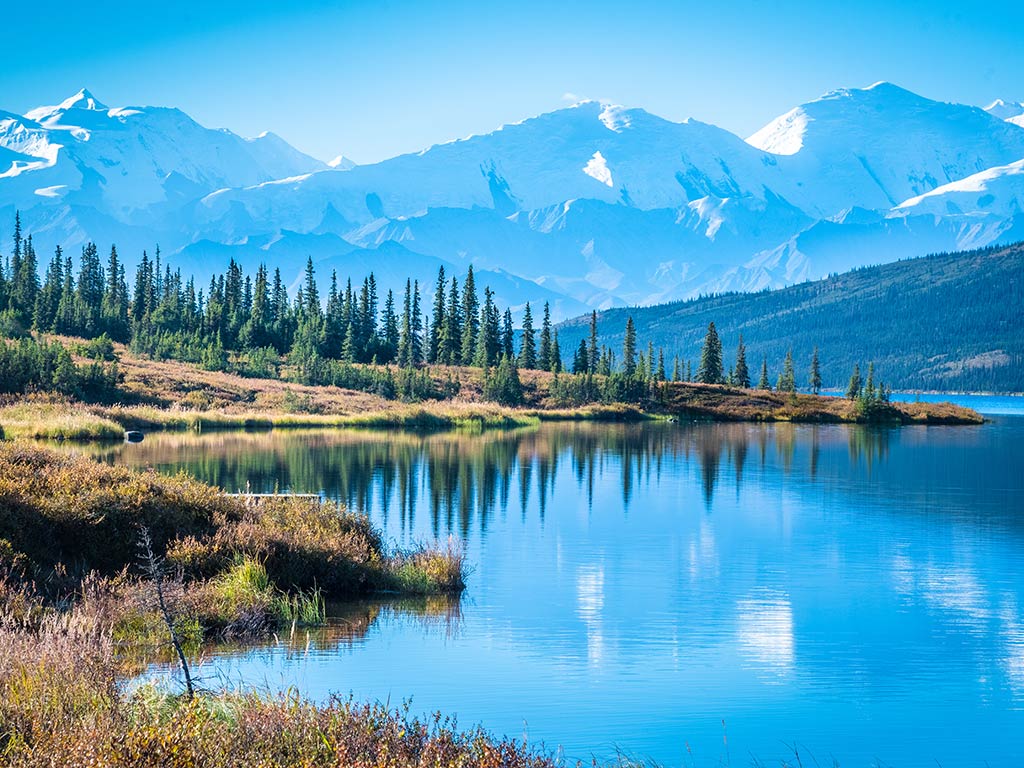
With such world-class fishing at so many different rivers, a lot of anglers pay little attention to the stillwater fisheries. While you can still make the case for the lakes being Alaska’s best-kept secret, more anglers come to visit every year. Thanks to a consistent stocking program across the state, you can now find plenty of Arctic Grayling, Rainbow Trout, Lake Trout, Salmon, and Arctic Char strewn across Alaska’s lakes.
To cover these lakes individually would simply take up way too much space. Thankfully, the Department of Fish and Game keeps a meticulous online depository of all stocked lakes, complete with maps and lists of species. They’re sorted by municipality, making it easy to look up your local lakes and plan your Alaska fly fishing trip.
Anything else?
Before we wrap things up, there are a few things you should know about the local fishing regulations. For starters, any non-resident angler over 16 will need to buy a fishing license. If you’re a resident, then you have to be 18 and older. Buying an Alaska fishing license is easy to do online, and here’s our full guide with all the details.
There are also regulations regarding bag and size limits, depending on the fish species and body of water. For example, if you’re looking to catch some King Salmon you’ll need a separate stamp to keep them legally. We highly recommend traveling with a licensed guide who’ll worry about the rules and leave you free to focus on the fishing itself.
Fly Fishing in the Land of the Midnight Sun

When summer hits, Alaska can get up to 22 hours of sunlight on any given day. The only state where you can enjoy sunlight at midnight, we can safely say it’s a truly unique experience. If you want to relish the feeling of casting flies at the frontier, with untamed nature all around you, there’s hardly a better place to be.
Have you ever been fly fishing in Alaska? Any stories to share or catches to brag about? Let us know in the comments below!






